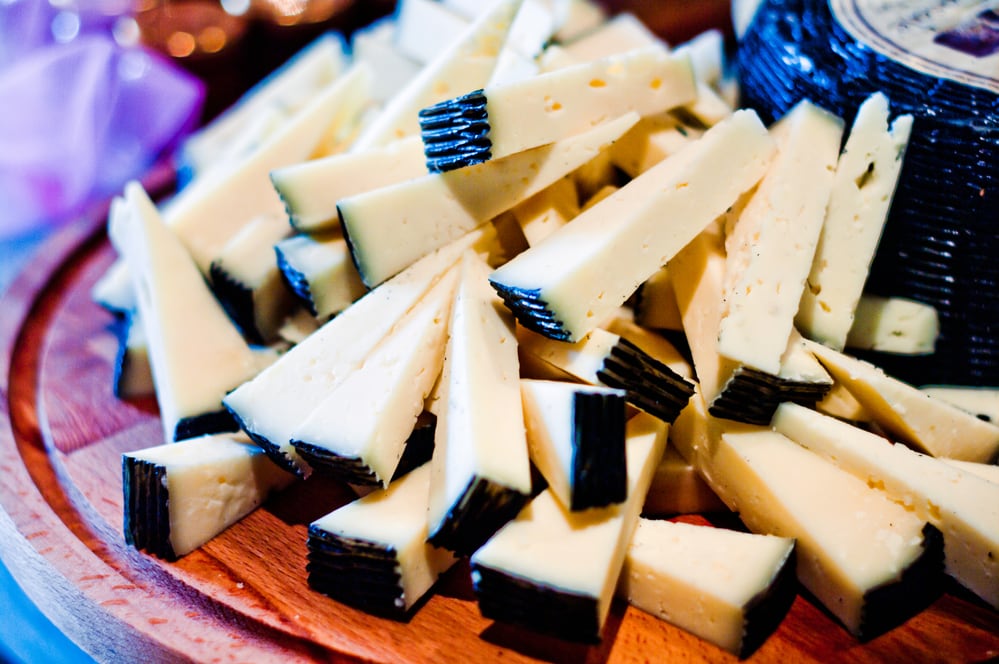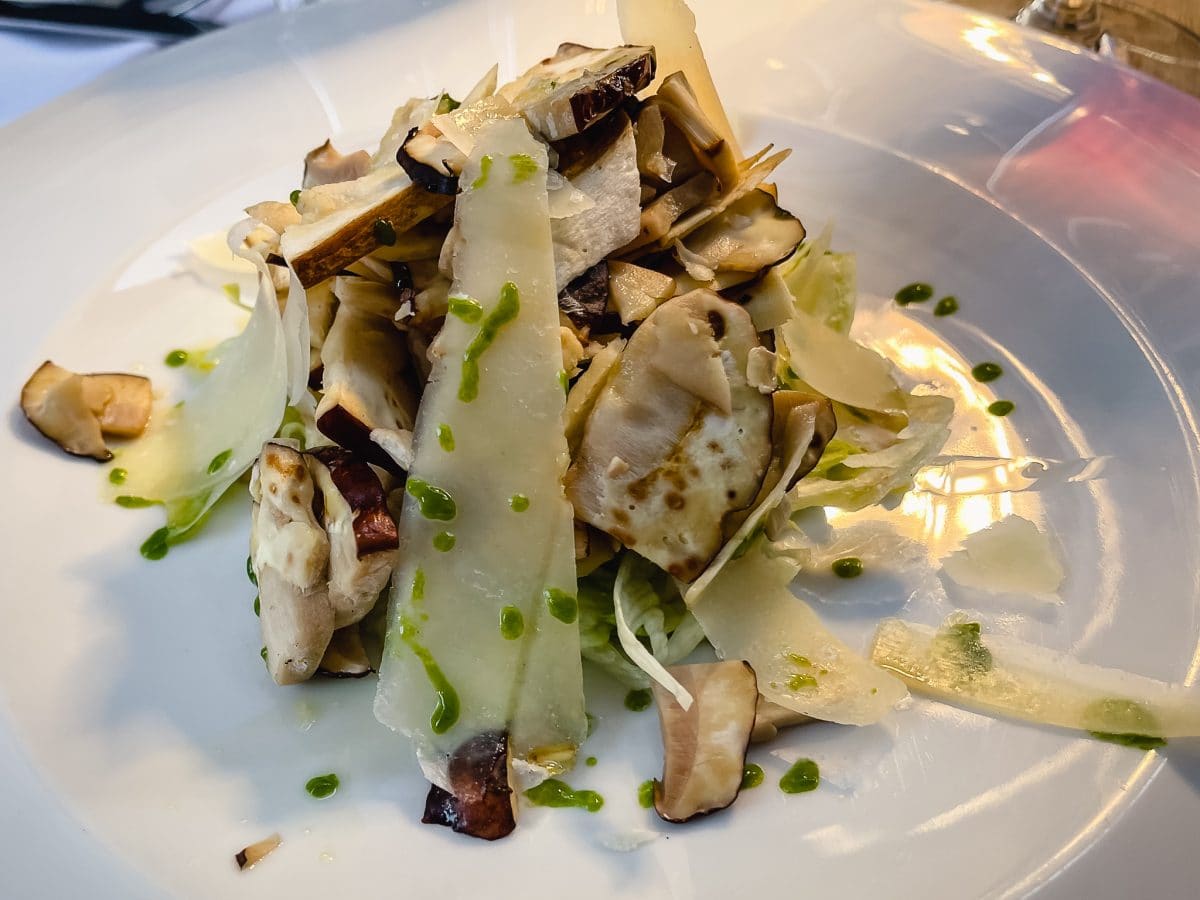If there’s one thing we can all agree on, it’s that Italy is a food-lovers dream.
Italian food is often associated with al fresco dining, sitting on a balcony overlooking the rolling hills of Tuscany, and digging into a delightful pasta dish accompanied by a glass of wine. We did plenty of that during our recent two-week stay in Tuscany, where conversation with friends is as much a part of Italian cuisine as the food and wine.

One of the tasty treats that we enjoyed during our time in Tuscany was pecorino cheese. We were fortunate to be staying just about half a mile from a local pecorino cheese factory, where it was easy to pick up some delicious aged pecorinos for a fraction of what they’d cost here at home. Plus we could take a look at those hard-working sheep right out back.
Pecorino is an ancient Italian cheese made with sheep’s milk. Though it’s produced all over Italy, it’s widely popular in Tuscany, where arguably the best pecorino cheese (pecorino Toscano) is made.
But what is pecorino cheese? What are the different types and why is it so special? Keep reading to find out more.
What is Pecorino Cheese
Pecorino cheese is a hard, white cheese made from sheep’s milk. It traditionally has a rich, sharp flavor and is often used for cooking pasta dishes, although it is also a popular cheese for a charcuterie plate or for snacking.
The fresh cheese is soft and somewhat pliable. It’s tasty as a table cheese paired with fresh fruit, crackers, spreads, and jams. It’s also tasty sliced and placed on bread along with some prosciutto.

The aged pecorino cheeses are harder, often with a salty or piquant flavor. They can be used in cooking, grated as with Parmigiano Reggiano, or drizzle your favorite honey over it and pop it in your mouth. There are a number of aged pecorino varieties so the options are endless.
The name Pecorino derives from the word pecora, the Italian name for sheep. Though pecorino cheese is always thought of as a type of cheese, it is often used to describe any type of Italian cheese made from sheep’s milk.
There are several types of pecorino cheese, which are usually named after where it’s made.
Origins of Pecorino Cheese
Pecorino cheese dates as far back as the Roman period. It has been produced in several regions across Italy over the centuries, but it’s most popular in Rome, Sardinia, Sicily, and especially, Tuscany.
The process of making pecorino cheese, and the recipe, haven’t changed much over the years. In fact, you’ll find most pecorino cheese has PDO (Protected Designation of Origin) status. This is a certification given to foods that meet the standards required of unique foods made within a particular area.
In Tuscany especially, pecorino is one of the most well-known types of cheese and is considered the region’s signature cheese. It was first produced in the Tuscan hills around 2000 years ago.

During this period, towns relied heavily on sheep for wool (and for dinner). Sheep farms were common, and sheep’s milk was plentiful, so pecorino cheese became one of the most common types of cheese made during this time. And very little has changed today.
What makes Tuscany’s pecorino special is that during the aging process, the cheese is often rubbed with olive oil, tomato paste, or salt which gives it its particular local flavor. It is often infused with truffles, wine, herbs, mushrooms, or spices to create specialty flavors.
Types of Pecorino Cheese
It’s said that the best pecorino cheese comes from Tuscany., with 30 different types to choose from. There must be some truth to that, as many award-winning cheeses have come from the region. You’ll find pecorino on the menu of almost every restaurant in Tuscany, the cheese dating back to Roman times. This is the cheese we enjoyed while we were in Tuscany.
Pecorino Romano comes from, as you might have guessed from the name, Rome. Pecorino Sardo comes from Sardinia and Pecorino Siciliano comes from the island of Sicily. Although we’ve visited both Rome and Sicily, I don’t remember trying pecorino there. Or, if we did (as seems likely), it didn’t make a big impression on us.
The most common type of pecorino is the Pecorino Romano. It is often aged for longer than other pecorinos and that makes it harder and more flavorful. It is often compared with Parmesan cheese, another popular Italian cheese used for cooking but made with cow’s milk. Pecorino Romano is often grated and used as a substitute for parmesan, adding a sharper flavor.
Characteristics of Pecorino Toscano
Pecorino Toscano comes in both young and aged varieties. It is made using pasteurized, whole-fat sheep milk and is aged for a minimum of 20 days. This is considered the minimum number of days required for PDO status.
When Pecorino Tuscano has been aged for more than 120 days, it becomes harder and spicier in flavor. This is when it moves into the stagianato classification.
A good pecorino has a smooth, hard rind that is brown in color. The rind color changes depending on how long it has been aged. The interior cheese must be compact, with a white to pale yellow color. The color will change to take on herbs and seasonings added.
Classifications
Pecorino cheese is divided into three classifications; stagionato, semi-stagionato, and fresco. The difference between each classification is determined by how long the cheese has been aged.
Stagionato tends to be aged the longest and is a hard cheese, with a more crumbly texture. It has a buttery and nutty flavor, but if infused with herbs can develop more complex flavors. I like pairing it with bold red wines, which complement the pungent flavor. This aged sheep milk cheese is Tony’s favorite and we brought a small wheel home. Note that hard and semi-aged cheese can be brought into the U.S. as long as it is vacuum-packed in plastic. You do need to declare it when passing through customs.).


Semi-stagionato falls in the mid-range of aging. It’s a good choice when you want melting, gooey cheese. It’s perfect for grating on potatoes, adding to pasta, or for a toasted cheese sandwich. For table service, drizzle with a few drops of high-quality balsamic vinegar or honey, and savor away. This cheese has a slightly less salty flavor than stagionato.
Pecorino fresco is a young cheese, with very little aging. It is cheeses have been aged for less time and are much softer with a mild and creamy flavor. This is most commonly used as table cheese paired with crackers and fruit. I put it in the like it, don’t love it category. There’s nothing wrong with it, I just prefer the hard texture and more interesting flavors of the aged cheeses.
What makes Pecorino special?
Many factors make Pecorino special, but mostly it’s the distinct flavor.
It’s much stronger than other Italian cheeses and the flavor lingers on the tongue for longer. Cheese aficionados say that the taste can last between 10-15 minutes after eating the cheese.
It’s also special as a truly handcrafted cheese still made using traditional methods. The sheep used to make pecorino have been grass-fed and their milk is usually collected between June to September when the grass is at its best for grazing. We saw plenty of them living next door to the cheese factory as well as the farmhouse where we stayed.
Want more travel stories like this one? Subscribe to our bi-weekly newsletter here.
For Pinterest
Save to your favorite Pinterest boards and remember to try Pecorino Toscano on your next trip to Italy.



